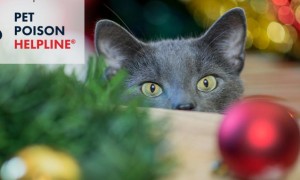Mastitis in Cats: Understanding, Causes, Symptoms, and Treatment
Mastitis is an inflammatory condition that primarily affects the mammary glands, and while it is commonly discussed in the context of humans or livestock, it can also occur in cats. While mastitis is relatively rare in felines compared to other animals, understanding this condition is crucial for cat owners, especially those with nursing mothers or breeds that may be predisposed to mammary gland issues. This article will explore the causes, symptoms, diagnosis, treatment, and prevention of mastitis in cats.
What is Mastitis?
Mastitis in cats refers to the inflammation of the mammary glands. The condition can be caused by a variety of factors, most commonly bacterial infections that enter through damaged or inflamed tissues. While it can occur in any female cat, it is most frequently seen in pregnant or nursing cats due to hormonal changes and the increased vulnerability of their mammary tissues.
Causes of Mastitis in Cats
The underlying causes of mastitis can be diverse. Common causes include:
-
Bacterial Infections: The majority of mastitis cases are due to bacterial infections, such as Staphylococcus, Streptococcus, or Escherichia coli. These bacteria can penetrate through the skin or enter the mammary glands via milk ducts during nursing.
-
Trauma: Physical trauma to the mammary glands, which could occur from rough handling, fighting with other animals, or excessive grooming, can lead to inflammation and infection.
-
Hormonal Changes: Fluctuations in hormone levels, particularly during pregnancy and lactation, can predispose a cat to mastitis.
-
Duct Blockages: Milk duct blockages can occur due to stagnant milk or debris, leading to swelling and infection.
Symptoms of Mastitis in Cats
Recognizing the signs of mastitis promptly is essential for timely treatment. Symptoms may vary but generally include:
-
Swollen Mammary Glands: The affected mammary glands will appear swollen, red, and may feel warm to the touch.
-
Pain and Discomfort: Cats may exhibit signs of pain when the inflamed areas are touched. They may also become more irritable or withdrawn.
-
Abnormal Milk: In nursing mothers, the milk may appear thick, discolored (yellow, green, or brown), or even contain pus.
-
Fever: In more severe cases of mastitis, an elevated body temperature may be present, indicating a systemic infection.
-
Changes in Behavior: Affected cats might show reduced appetite, lethargy, or discomfort when nursing their kittens.
-
Kittens’ Behavior: If the mother cat is nursing and develops mastitis, the kittens may appear agitated and may not be able to nurse properly, potentially leading to distress.
Diagnosis of Mastitis in Cats
If mastitis is suspected, it is crucial to seek veterinary care promptly. The veterinarian will conduct a thorough physical examination and may perform additional tests, including:
-
Mammary Gland Inspection: The vet will inspect the mammary glands for signs of swelling, redness, or discharge.
-
Milk Culture: A sample of the milk may be taken and cultured to identify the offending bacteria, guiding appropriate antibiotic therapy.
-
Blood Tests: Blood tests may be conducted to assess the overall health of the cat and to check for signs of infection.
Treatment of Mastitis in Cats
The treatment for mastitis will depend on the severity of the condition. Common treatment options include:
-
Antibiotic Therapy: If a bacterial infection is confirmed, antibiotics will be prescribed to combat the infection. It is essential to complete the entire course of antibiotics even if symptoms improve.
-
Pain Relief: Non-steroidal anti-inflammatory drugs (NSAIDs) may be administered to help alleviate pain and reduce inflammation.
-
Supportive Care: Providing a comfortable environment is essential. Encourage the cat to eat and drink, and ensure she has a quiet space to recover.
-
Surgical Intervention: In severe cases where abscesses develop or the infection does not respond to antibiotics, surgical drainage may be necessary.
-
Kittens’ Care: If the mother cat is unable to nurse due to pain or discomfort, alternative feeding methods for the kittens may be required, such as using kitten formula.
Prevention of Mastitis in Cats
Preventive measures can be vital for minimizing the risk of mastitis, especially in nursing cats. Here are some strategies:
-
Regular Veterinary Check-ups: Routine veterinary visits can help monitor the health of pregnant and nursing cats.
-
Post-Delivery Care: Monitoring the mother cat after delivery for any signs of mastitis is crucial. Ensuring her environment is clean and stress-free can also help.
-
Avoiding Trauma: Handle mother cats gently, and keep them separated from aggressive animals to prevent physical injury to the mammary glands.
-
Hygiene: Maintain good hygiene during the nursing period by keeping the kitten area clean and ensuring the mother cat is free from infections.
Conclusion
Although mastitis in cats is not as common as in other species, it is a serious condition that requires prompt attention. Cat owners should be aware of the risks, recognize the symptoms, and seek veterinary care when necessary. With appropriate treatment and preventive measures, the health and comfort of both mother cats and their kittens can be effectively maintained, ensuring a successful nursing period and recovery.





